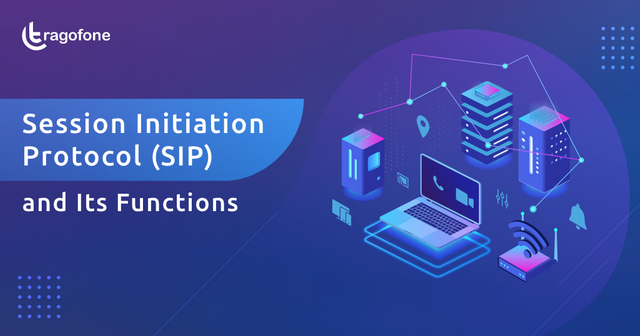Session Initiation Protocol (SIP) is a signaling protocol used for initiating, maintaining, and terminating real-time communication sessions over IP networks. These sessions can include voice calls, video calls, messaging, and other multimedia communication types. SIP is widely used in Voice over IP (VoIP) systems to manage voice and video calls over the internet.
Key Features of SIP:
Session Management: SIP establishes, modifies, and terminates communication sessions between users.
Media Independence: SIP itself is not concerned with the type of media being used. It can set up sessions for voice, video, text, or other media types.
Scalability: SIP can be used for two-party (point-to-point) sessions or multi-party (group) sessions, making it suitable for simple voice calls or complex video conferences.
Addressing: SIP uses SIP addresses (similar to email addresses) to identify users. A typical SIP address looks like
sip:[email protected].Protocol Components:
- User Agents (UA): These are the devices or software applications that interact using SIP, such as IP phones, softphones, or video conferencing tools.
- SIP Servers:
- Proxy Server: Routes SIP requests to the recipient's location.
- Registrar Server: Stores user location and authentication details.
- Redirect Server: Redirects requests to another location if the user is not found at the current address.
SIP Workflow:
- Session Setup: When a call is initiated, SIP sends an INVITE message from one user agent to another, typically through one or more SIP servers.
- Session Negotiation: Using Session Description Protocol (SDP), the parties agree on the media types and formats for the communication (e.g., audio, video codecs).
- Session Maintenance: SIP monitors the session's status and handles any changes, such as adding participants or modifying the media (e.g., upgrading to video).
- Session Termination: The session is terminated by sending a BYE message.
Advantages of SIP:
- Flexibility: SIP supports a variety of communication types, from simple voice calls to complex multimedia interactions.
- Scalability: It can handle individual calls and large conference systems with multiple participants.
- Cost-Effective: By using the internet for communications, SIP-based systems often reduce costs compared to traditional telephony.
SIP is the backbone of many modern communication systems, including VoIP services, conferencing tools, and even some instant messaging platforms.

"🤩 Love this in-depth explanation of Session Initiation Protocol (SIP)! It's so fascinating to see how SIP enables seamless communication sessions over IP networks, making it a crucial part of modern VoIP systems and conferencing tools. The key features you listed are super helpful in understanding how SIP works its magic! 📚 I'm especially intrigued by the scalability and flexibility aspects of SIP - it's amazing to think about how it can handle anything from simple voice calls to complex multimedia interactions! 💬 What do you guys think is the most interesting aspect of SIP? Have any questions or experiences with SIP in your own work or personal projects?"
I also gave you a 0.48% upvote for the delegations you have made to us. Increase your delegations to get more valuable upvotes. Cheers! 🎉
Help Us Secure the Blockchain for You
Your vote matters! Support strong governance and secure operations by voting for our witnesses:
Get Involved
Downvoting a post can decrease pending rewards and make it less visible. Common reasons:
Submit